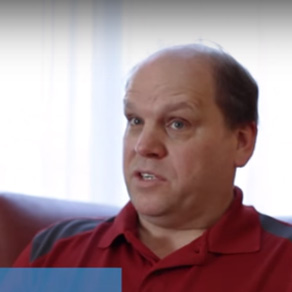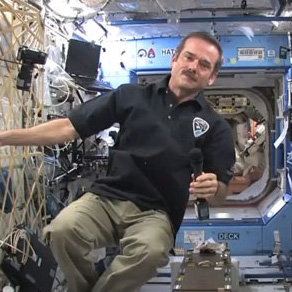Our Stories: Every Child is An Explorer
In school, giving the right answer is great. However, science teacher Phil Langford gets even more excited hearing something else from students.
“Science is asking the right questions,” says Phil, head of the science department at Bert Fox High School in Fort Qu’Appelle, Saskatchewan.
“To get quality information, you have to generate a good question. Inquiry is a crucial skill for students to master to be part of the workforce in the 21st century,” he notes.
Problem-Based Learning through Citizen Science
In response to this need, traditional teaching methods and end-of-the-unit “projects” are giving way to more problem-based learning. That gives students the opportunity to ask meaningful questions, develop the answers and hone their critical thinking skills in the process.
Sometimes, the results of such inquiry projects can be out of this world.
Phil’s students — he calls them citizen scientists — joined more than 7,500 other students in 300 classrooms across Canada to participate in Radi-N2 & You. Let’s Talk Science developed this action project in partnership with the Canadian Space Agency.
In a very memorable experience, the students collected and studied data in their classroom on cosmic radiation. The experiment was all the more exciting because Canadian astronaut Chris Hadfield was conducting a similar experiment while aboard the International Space Station (ISS) at the time.
“‘Wow,” Phil recalls the students saying, “this is 'real science!’ ”
The action project enabled teachers — at no charge, thanks to the generosity of Let’s Talk Science donors — to enrol their classes, receive equipment, and be involved in the project from start to finish. It happened through Let’s Talk Science’s CurioCity.
This free, web-based program also provides teachers like Phil with inquiry and problem-based resources, in English (at CurioCity) and French (at CurioCité), to get action projects like Radi-N2 off the ground.
When the project wrapped up, Phil recalls how his enthralled students were able to watch the rebroadcast of the downlink with Commander Hadfield. “The educational discussions, motivations, and career aspirations that arose from that broadcast were immense,” he notes.
Collaboration in the Digital World
Key to students’ success is creating a classroom culture where teachers are more like coaches. That supports student learning and another critical 21st century skill: collaboration.
|
About the RaDI-N2 & You Action Project This data collection experiment measured astronauts’ exposure to potentially dangerous neutron radiation using innovative Canadian technology. Let’s Talk Science and the Canadian Space Agency developed the RaDI-N2 & You Action Project to engage Canadian classrooms in a similar experiment. The goal was to research and compare the amount of radiation absorbed by astronauts in space and humans on earth. Participating students received video addresses from Commander Chris Hadfield. They could also view real-time data collection to compare their results with inputs from other students and those collected aboard the ISS. Visit CurioCity to learn about other Action Projects and Events for students in Grades 8-12. |
“If you look at science as a profession, you’ll see global collaboration on projects,” notes Phil. “If our youth are used to that concept, it won’t be something new to them if they pursue science as a career.” Regardless of their career path or where they work, he notes that “students need to be prepared to be team players — whether electronically or physically.”
Levelling the Sandbox with Online Learning
“Science isn’t a single in-the-box subject,” says Phil. CurioCity and CurioCité promote the concept that science integrates everything. He is thrilled when students use their critical thinking to make those kinds of connections. Not every child will grow up to be an astronaut, but all can be explorers.
“You can now have a virtual visit to the classroom in real time,” says Phil. Thanks to this unique, free online STEM learning community, the great divide between access to such resources for urban and rural classrooms is narrowing. Meaningful student-friendly content—like current STEM articles, videos and career profiles — and teacher-friendly resources are available anytime, anywhere with Internet access.
“Keeping students engaged in science is just as big a challenge as helping them master the material,” says Phil. He credits Let’s Talk Science with providing “avenues to access my students’ curiosity and wonder in ways that would not otherwise be possible.”
Donate now to Let’s Talk Science and give the gifts of critical thinking, problem-solving, creativity and collaboration to children and youth across Canada through free educational programs, including CurioCity and CurioCité.

